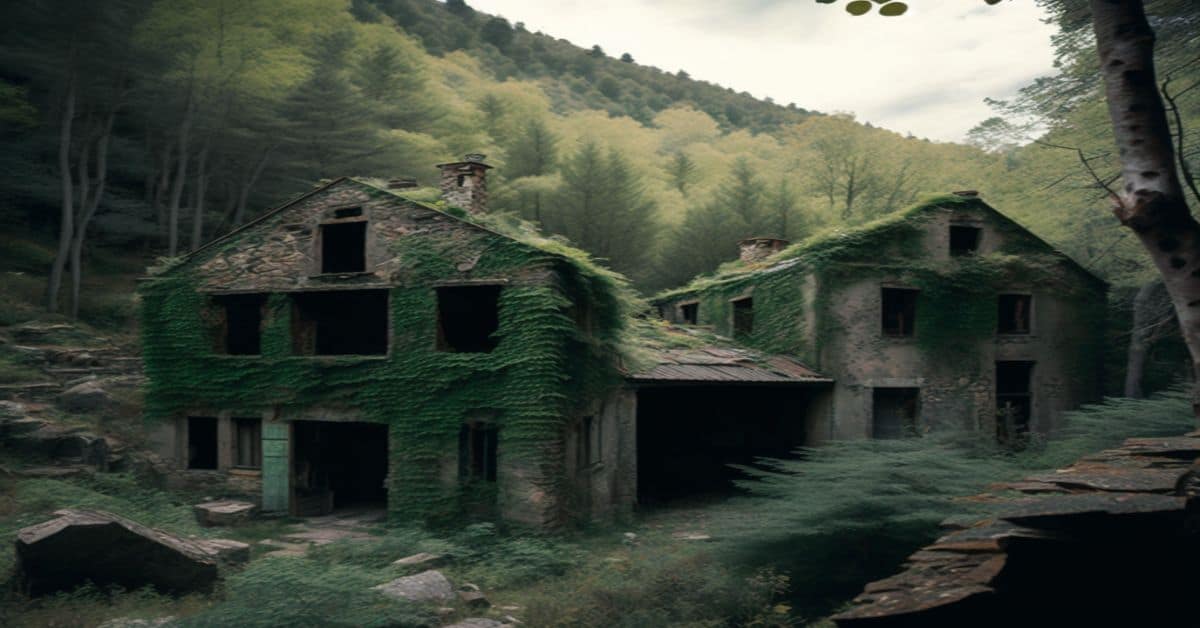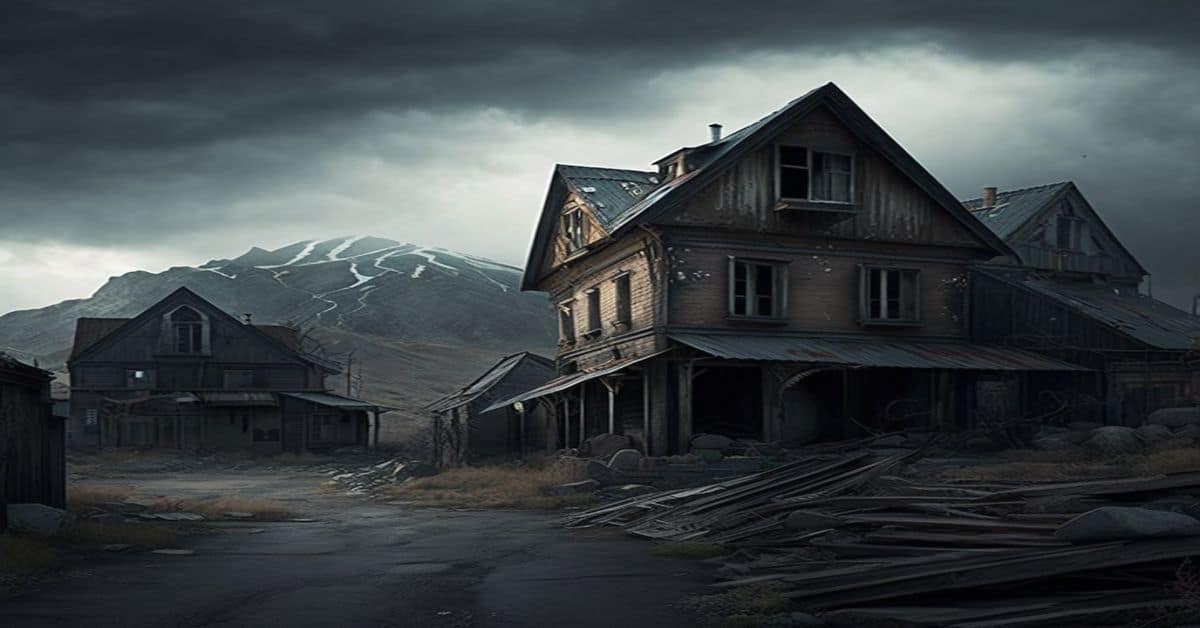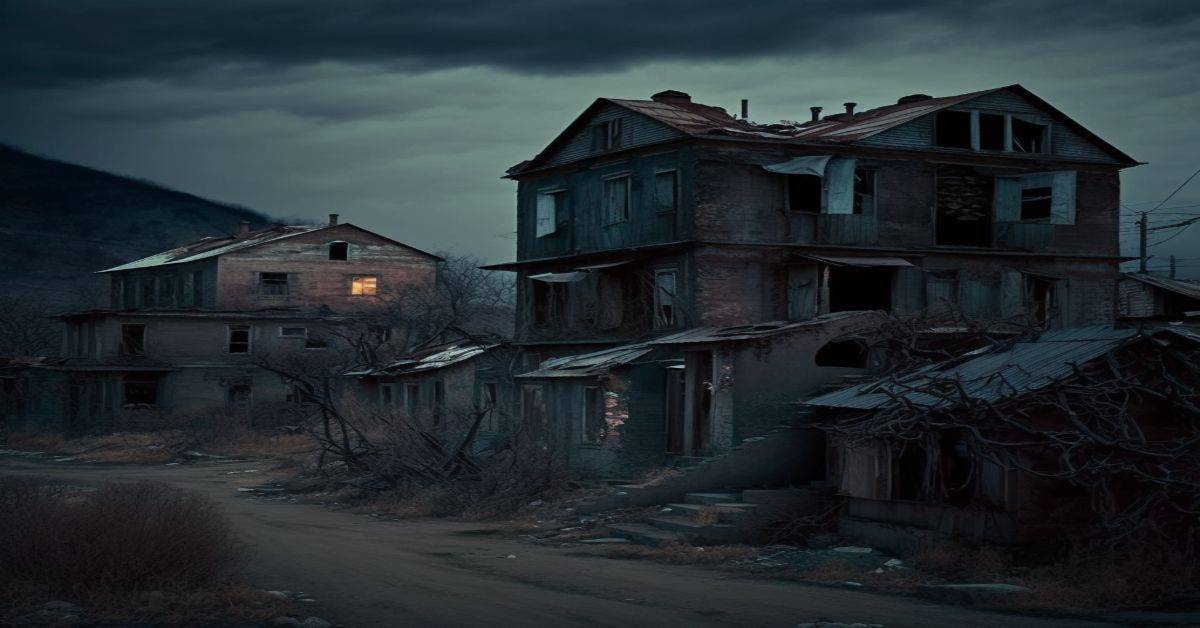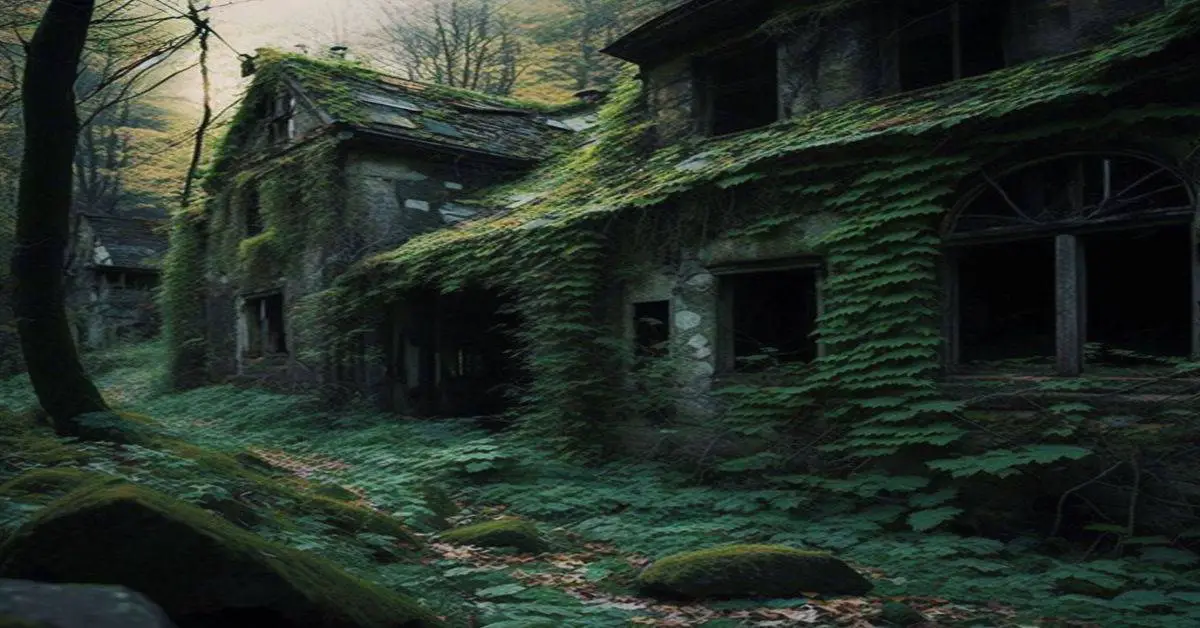Marietta, PA
County:
Westmoreland
Zip Code:
Latitude / Longitude:
Elevation:
Time Zone:
Eastern (EST) (UTC-5)
Established:
Disestablished:
Comments:
Remains:
Current Status:
Remarks:
Masten, PA
County:
Lycoming
Zip Code:
Latitude / Longitude:
41° 30′ 26″ N, 76° 49′ 14″ W
Elevation:
Time Zone:
Eastern (EST) (UTC-5)
Established:
Disestablished:
Comments:
Masten is a ghost town in Cascade and McNett Townships in Lycoming County, Pennsylvania, United States. It was a lumber mill company town from 1905 to 1930, served as the site of a Civilian Conservation Corps camp from 1933 to 1940, and the last family left it in 1941. Since then it has been a ghost town and the site serves as the trailhead for the Old Loggers Path, a loop hiking trail.
Remains:
Masten was founded as a lumber mill town in 1905 by Charles W. Sones. Sones owned the mill and town and worked under a contract with the Union Tanning Company, which needed hemlock bark for tanning leather and also sold hardwoods from the area. The village was served by two railroad lines: the Susquehanna and New York Railroad and the Susquehanna and Eagles Mere Railroad. The railroads passed through many cuts and fills, and the grades built at the height of the lumber era in Pennsylvania today carry the Old Loggers Path.
Current Status:
In April 1917 the contract with Sones expired and the mill, town, and railroads were purchased by the Central Pennsylvania Lumber Company. The mill was in operation from 1905 to September 18, 1930, when the last log was cut. After the mill closed, most of the houses were torn down and their lumber sold and the Susquehanna and Eagles Mere Railroad was abandoned. On May 6, 1933, Civilian Conservation Corps “State Forest Camp” S-80-Pa was established at the site of Masten, and some of the remaining buildings were torn down to make the camp. The CCC camp closed in 1940. Some families had stayed after the mill closed and during the CCC era, but in 1941 the last family left Masten. As of 2007, only some foundations of the buildings and a smokestack are still left standing from Masten. There are still some of the original homes/structures still standing today and being used as hunting camps.
Remarks:
Meco, PA
County:
Indiana
Zip Code:
Latitude / Longitude:
Elevation:
Time Zone:
Eastern (EST) (UTC-5)
Established:
Disestablished:
Comments:
Remains:
Current Status:
Remarks:
Metcalf, PA
County:
Westmoreland
Zip Code:
Latitude / Longitude:
Elevation:
Time Zone:
Eastern (EST) (UTC-5)
Established:
Disestablished:
Comments:
Remains:
Current Status:
Remarks:
Millwood Shaft, PA
County:
Westmoreland
Zip Code:
Latitude / Longitude:
Elevation:
Time Zone:
Eastern (EST) (UTC-5)
Established:
Disestablished:
Comments:
Remains:
Current Status:
Remarks:
Nebraska, PA
County:
Forest
Zip Code:
Latitude / Longitude:
Elevation:
Time Zone:
Eastern (EST) (UTC-5)
Established:
Disestablished:
Comments:
Remains:
Current Status:
Remarks:
Nesbit Run, PA
County:
Indiana
Zip Code:
Latitude / Longitude:
Elevation:
Time Zone:
Eastern (EST) (UTC-5)
Established:
Disestablished:
Comments:
Remains:
Current Status:
Remarks:
Old Patton, PA
County:
Westmoreland
Zip Code:
Latitude / Longitude:
Elevation:
Time Zone:
Eastern (EST) (UTC-5)
Established:
Disestablished:
Comments:
Remains:
Current Status:
Remarks:
Peale, PA
County:
Clearfield
Zip Code:
Latitude / Longitude:
Elevation:
Time Zone:
Eastern (EST) (UTC-5)
Established:
Disestablished:
Comments:
Remains:
Current Status:
Remarks:
Pithole, PA
County:
Venango
Zip Code:
Latitude / Longitude:
41°31’26″N 79°34’53″W
Elevation:
1,316 ft (401 m)
Time Zone:
Eastern (EST) (UTC-5)
Established:
1865
Disestablished:
1877
Comments:
Pithole, or Pithole City, is a ghost town in Cornplanter Township, Venango County in Pennsylvania, about 6 miles (9.7 km) from Oil Creek State Park and the Drake Well Museum, the site of the first commercial oil well in the United States. Pithole’s sudden growth and equally rapid decline, as well as its status as a “proving ground” of sorts for the burgeoning petroleum industry, made it one of the most famous of oil boomtowns.
Remains:
Oil strikes at nearby wells in January 1865 prompted a large influx of people to the area that would become Pithole, most of whom were land speculators. The town was laid out in May 1865, and by December was incorporated with an approximate population of 20,000. At its peak, Pithole had at least 54 hotels, 3 churches, the third largest post office in Pennsylvania, a newspaper, a theater, a railroad, the world’s first pipeline and a red-light district “the likes of Dodge City’s.” By 1866, economic growth and oil production in Pithole had slowed. Oil strikes around other nearby communities and numerous fires drove residents away from Pithole and, by 1877, the borough was unincorporated. The site was cleared of overgrowth and was donated to the Pennsylvania Historical and Museum Commission in 1961. A visitor center, containing exhibits pertaining to the history of Pithole, was built in 1972. Pithole was listed on the National Register of Historic Places in 1973.
Current Status:
The site was purchased in 1957 by James B. Stevenson, the publisher of the Titusville Herald, who later served as the chairman of the Pennsylvania Historical and Museum Commission from 1962 to 1971. Stevenson cleared the brush from the site, and donated it to the Pennsylvania Historical and Museum Commission in 1961. Today, only a few foundations and mowed paths mark the buildings and former streets of Pithole. The site of Pithole was listed in the National Register of Historic Places on March 20, 1973. A walking tour of Pithole’s 84.3 acres (34.1 ha) of streets can be completed in 42 minutes.[47][48] The visitor center was constructed in 1972.
Remarks:
The Pennsylvania Historical and Museum Commission operates the visitor center as part of the nearby Drake Well Museum, adjacent to Oil Creek State Park, outside of Titusville. The visitor center contains several exhibits, including a scale model of the city at its peak, an oil-transport wagon that is stuck in mud, and a small, informational theater. The visitor center is usually open, annually, from the Memorial Day weekend, at end of May, through Labor Day in September. The season is kicked off with the annual Wildcatter Day celebration featuring music, tours, demonstrations and other activities.
Quaker Bridge, PA
County:
Zip Code:
Latitude / Longitude:
Elevation:
Time Zone:
Eastern (EST) (UTC-5)
Established:
Disestablished:
Comments:
Remains:
Current Status:
Remarks:
Rausch Gap, PA
County:
Lebanon
Zip Code:
Latitude / Longitude:
40° 29′ 58″ N, 76° 35′ 52″ W
Elevation:
Time Zone:
Eastern (EST) (UTC-5)
Established:
Disestablished:
Comments:
Rausch Gap is a ghost town in Cold Spring Township, Lebanon County, Pennsylvania in the United States. Once the largest of several coal mining towns in St. Anthony’s Wilderness that appeared, flourished, and died during the period between 1830 and 1910. The ruins of the town are located in Cold Spring Township on the southern slopes of Sharp Mountain, where Rausch Creek cuts a gap through the mountain before entering Stony Creek, at 40°29’58″N 76°35’52″W.
Remains:
While it may have been established as early as 1828, rapid growth did not occur until 1850, when the Dauphin and Susquehanna Coal Company built a railroad up the valley from the Susquehanna River to Rausch Gap. The town became a rail center, with company offices and repair shops situated there. In 1854, the Dauphin and Susquehanna was extended eastward to Pine Grove and Auburn, as part of a planned railroad to Allentown. By 1860, the population had grown to approximately 1,000. Employment was found in the mines and railroad shops. Many train crews also resided in Rausch Gap.
Current Status:
By the year 1875, fewer than 100 people remained in the settlement. Some time around 1883, most of the buildings in the town were torn down by the railroad. By 1910, all the residents had departed. All that remains today are the stone foundations of buildings and a small cemetery. Nature has taken back the land. Rausch Gap is now one of the many stops along the Appalachian Trail. There is a shelter there for overnight campers and cold water from a spring and a decent outhouse.
Remarks:
Several factors then contributed to the decay and eventual demise of the town. The first of these was the closing of the mine, although some mining continued into the 1930s. The line to Allentown had never been built, and the railroad came under the control of the Philadelphia and Reading Railroad. With the completion of the Lebanon and Tremont Branch in 1870, Pine Grove became a more important point on the line. The transfer of the machine shops and company offices from Rausch Gap to Pine Grove in 1872 was the most important factor in the demise of the town. When the railroad moved out, the town was stripped of its final purpose for existence.
Red Hot, PA
County:
Zip Code:
Latitude / Longitude:
Elevation:
Time Zone:
Eastern (EST) (UTC-5)
Established:
Disestablished:
Comments:
Remains:
Current Status:
Remarks:
Reed, PA
County:
Indiana
Zip Code:
Latitude / Longitude:
Elevation:
Time Zone:
Eastern (EST) (UTC-5)
Established:
Disestablished:
Comments:
Remains:
Current Status:
Remarks:
Robindale, PA
County:
Indiana
Zip Code:
Latitude / Longitude:
Elevation:
Time Zone:
Eastern (EST) (UTC-5)
Established:
Disestablished:
Comments:
Remains:
Current Status:
Remarks:
Ricketts, PA
County:
Sullivan
Zip Code:
Latitude / Longitude:
41° 23′ 28″ N, 76° 16′ 40″ W
Elevation:
Time Zone:
Eastern (EST) (UTC-5)
Established:
Disestablished:
Comments:
Ricketts is a ghost town that was established as a lumber mill company town in Sullivan and Wyoming counties, in the U.S. state of Pennsylvania. Ricketts was built in 1890 along Mehoopany Creek in both Colley Township in Sullivan County and Forkston Township in Wyoming County for sawmills of the Trexler and Turrell Lumber Company.
Remains:
It was named for Robert Bruce Ricketts, who owned most of the land and timber around the village, and who was a partner in the company with Harry Clay Trexler, J.H. Turrell, and others. Ricketts had 800 inhabitants at its peak and extended into the northernmost section of what is now Ricketts Glen State Park.
Current Status:
Rail lines were built to the mills at Ricketts, including the Bowman Creek branch of the Lehigh Valley Railroad which opened in 1893. The mills closed in 1913 when the lumber was exhausted and the last house was torn down in the 1930s.
Remarks:
Scotia, PA
County:
Centre
Zip Code:
Latitude / Longitude:
40° 47′ 59″ N, 77° 56′ 46″ W
Elevation:
Time Zone:
Eastern (EST) (UTC-5)
Established:
Disestablished:
Comments:
Scotia was a village in Patton Township, Centre County, Pennsylvania, at 40°47’59″N 77°56’46″WCoordinates: 40°47’59″N 77°56’46″W. Although the community was called Scotia, the name of the local post office was Benore (Ben being the Gaelic for “mountain [of]”).
Remains:
It got its start when Andrew Carnegie, through the Edgar Thompson Steel Company, leased large tracts of iron ore in the township. Small-scale mining had taken place here since the late 18th century, but Carnegie organized a major effort to exploit the deposits in 1880. Ore was removed from a broad open pit, washed to separate it from clay, and loaded onto railcars. The Pennsylvania Railroad had extended its Fairbrook Branch to the village in 1881, and hauled the ore to steel mills in Pittsburgh. There was also an extensive narrow-gauge railroad in the pits to haul ore to the washer, and several artesian wells and a reservoir to supply water for ore washing.
Current Status:
There was a brief attempt to revive mining at Scotia during World War II, and the Bellefonte Central received Reconstruction Finance Corporation money to build a new branch from Alto to Scotia to serve the new facilities. However, the mine was only briefly in operation before the cessation of hostilities, and soon ceased permanently. The area is now encompassed by Pennsylvania State Game Lands No. 176.
Remarks:
Carnegie sold the ore deposits to the Bellefonte Furnace Company in 1899, feeling that they were no longer economical to work and ship to Pittsburgh. Immediately after the sale, the Bellefonte Central Railroad built a new branch from Graysdale to Scotia, allowing the ore to be shipped directly to the company’s furnaces rather than take a roundabout route on the PRR. However, mining halted in about 1913, and all the assets of the Bellefonte Furnace Company were sold at foreclosure in 1914. The Bellefonte Central abandoned its line to Scotia in 1915, and the PRR in 1927. The village had already been vacated in 1922 or 1923.
Scottglen, PA
County:
Indiana
Zip Code:
Latitude / Longitude:
Elevation:
Time Zone:
Eastern (EST) (UTC-5)
Established:
Disestablished:
Comments:
Remains:
Current Status:
Remarks:
Shanktown, PA
County:
Indiana
Zip Code:
Latitude / Longitude:
Elevation:
Time Zone:
Eastern (EST) (UTC-5)
Established:
Disestablished:
Comments:
Remains:
Current Status:
Remarks:
Sligo (Harrison Township in Allegheny County), PA
County:
Allegheny
Zip Code:
Latitude / Longitude:
Elevation:
Time Zone:
Eastern (EST) (UTC-5)
Established:
Disestablished:
Comments:
Remains:
Current Status:
Remarks:
Smokeless, PA
County:
Indiana
Zip Code:
Latitude / Longitude:
Elevation:
Time Zone:
Eastern (EST) (UTC-5)
Established:
Disestablished:
Comments:
Remains:
Current Status:
Remarks:
Snyder, PA
County:
Indiana
Zip Code:
Latitude / Longitude:
Elevation:
Time Zone:
Eastern (EST) (UTC-5)
Established:
Disestablished:
Comments:
Remains:
Current Status:
Remarks:
Social Hall, PA
County:
Westmoreland
Zip Code:
Latitude / Longitude:
Elevation:
Time Zone:
Eastern (EST) (UTC-5)
Established:
Disestablished:
Comments:
Remains:
Current Status:
Remarks:
Somerfield, PA
County:
Zip Code:
Latitude / Longitude:
Elevation:
Time Zone:
Eastern (EST) (UTC-5)
Established:
Disestablished:
Comments:
Remains:
Current Status:
Remarks:
Strights, PA
County:
Elk
Zip Code:
Latitude / Longitude:
Elevation:
Time Zone:
Eastern (EST) (UTC-5)
Established:
Disestablished:
Comments:
Remains:
Current Status:
Remarks:
Stringtown, PA
County:
Greene
Zip Code:
Latitude / Longitude:
39° 54′ 37.51″ N, 79° 56′ 21.34″ W
Elevation:
Time Zone:
Eastern (EST) (UTC-5)
Established:
Disestablished:
Comments:
Stringtown is an unincorporated community in Greene County, in the U.S. state of Pennsylvania.
Remains:
The community was probably named from the way its buildings line the main road like a string.
Current Status:
Remarks:
Tartown, PA
County:
Adams
Zip Code:
Latitude / Longitude:
39° 49′ 11″ N, 77° 27′ 10″ W
Elevation:
Time Zone:
Eastern (EST) (UTC-5)
Established:
Disestablished:
Comments:
Tartown, formerly an unincorporated community, is now an extinct community in Adams County, Pennsylvania, United States.
Remains:
Current Status:
The remains of Tartown are located on property of the Waynesboro, Pennsylvania, Borough Authority and in the adjacent Michaux State Forest in Hamiltonban Township. The locale has in part been inundated by the reservoir created by the Waynesboro Dam on the East Branch of the Antietam Creek. The name reportedly originates from the local production of pine tar. Wagamansville is a variant name.
Remarks:
Wakena, PA
County:
Westmoreland
Zip Code:
Latitude / Longitude:
Elevation:
Time Zone:
Eastern (EST) (UTC-5)
Established:
Disestablished:
Comments:
Remains:
Current Status:
Remarks:
Wehrum, PA
County:
Indiana
Zip Code:
Latitude / Longitude:
Elevation:
Time Zone:
Eastern (EST) (UTC-5)
Established:
Disestablished:
Comments:
Remains:
Current Status:
Remarks:
Whiskey Run, PA
County:
Indiana
Zip Code:
Latitude / Longitude:
Elevation:
Time Zone:
Eastern (EST) (UTC-5)
Established:
Disestablished:
Comments:
Remains:
Current Status:
Remarks:
White Rock, PA
County:
Armstrong
Zip Code:
Latitude / Longitude:
Elevation:
Time Zone:
Eastern (EST) (UTC-5)
Established:
Disestablished:
Comments:
Remains:
Current Status:
Remarks:
Yellow Springs, PA
County: Chester
Zip Code:
Latitude / Longitude: 40° 6′ 0″ N, 75° 37′ 23″ W
Elevation:
Time Zone: Eastern (EST) (UTC-5)
Established:
Disestablished:
Comments: Yellow Springs is a historic village in West Pikeland Township, Chester County, Pennsylvania, United States, between Phoenixville and Downingtown.
Remains:
Current Status: The community includes historic churches, established in the 1770s by German Reformed and Lutheran members. The village is located at the western end of Yellow Springs Road, a spur from Pennsylvania Route 113 near Chester Springs.
Remarks:



